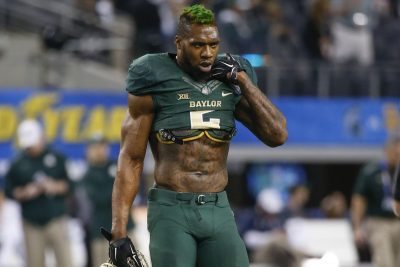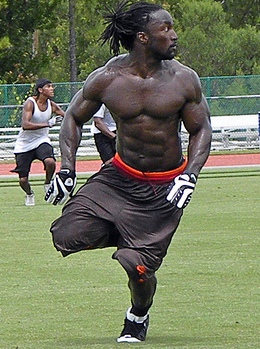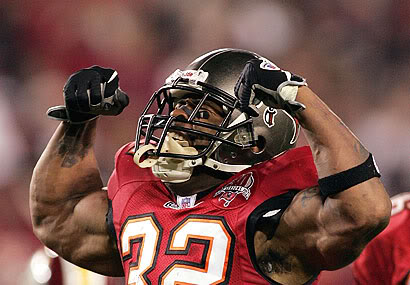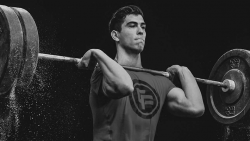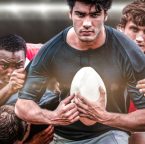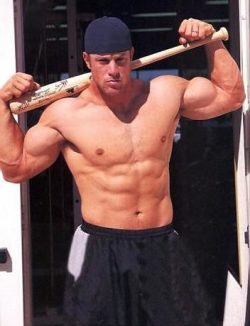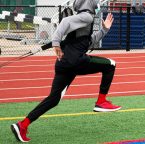If you are a football athlete looking to develop superhuman strength, explosive power, and blazing speed, then this article is for you.
In this article, I will share some of the techniques and strategies we use at Elite Sports Performance to develop strong and explosive playmakers.
Whether you are a massive defensive tackle or an undersized cornerback, the strategies in this article can be applied to help you elevate your game to the next level. All that is required from you is to put in 100% effort and be consistent with your football training and the results will come.
So let’s begin….
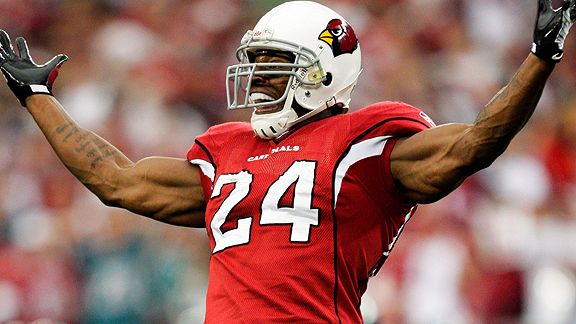
FOOTBALL IS A VIOLENT GAME
Football is an extremely violent and aggressive game that combines the perfect blend of speed, strength and power. If you lack one of those qualities then your performance on the field will suffer drastically. Because of that, it is very important to have strategies in place to ensure you are training all three (along with host of other qualities such as core strength, injury prevention, cardio/conditioning, etc. – but that is a whole other article in itself, so let’s just focus on training for speed, power, and strength for now).
Related: Become A Football Beast With The Football Performance System
Related: Uncomplicated Football Strength and Conditioning Program
STARTING WITH STRENGTH
Strength = Maximum Amount of Force You Can Create
For those of you who have read any of my previous articles, you know that I am a HUGE proponent of getting my athletes super strong (WHY STRONGER ATHLETES MAKE BETTER ATHLETES & BUILDING STRONGER ATHLETES PART I MAXIMAL EFFORT METHOD). In my opinion, it can never hurt to be too strong. Strength is a prerequisite to both power and speed …meaning you can’t get faster or more powerful without getting stronger first.
Now with that being said, we want to ensure we are getting stronger with the right movements. While it might look cool to curl 100-pound dumbbells, I’d much rather have my athletes focus on getting stronger in compound movements that they will be using on the field.
The two movements that we place an emphasis on are hip extension and horizontal pressing (while we include accessory work to focus on other movements and planes, those two are the ones that we devote most of our maximal strength work too).
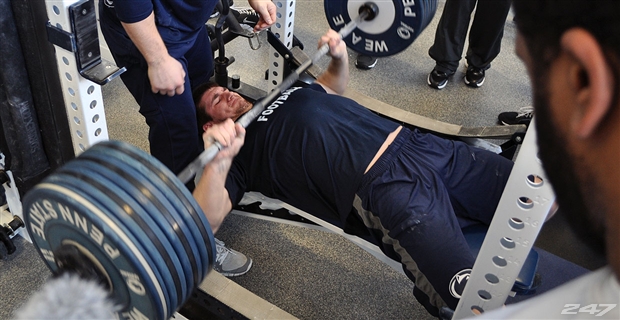
THE POWER COMPONENT
Power = Maximum Amount of Force You Can Create + Velocity
While I am a huge fan of strength, unless you are competing in a powerlifting meet, as an athlete we need to be able to recruit (or use) that strength quickly. This is referred to as “usable strength”. I go into much more detail on “usable strength” in my article WHY STRONGER ATHLETES MAKE BETTER ATHLETES.
If you look at the power equation, it is the same equation as strength with the addition of velocity. So essentially we are adding a speed component here in which the athlete is developing or recruiting their strength as quickly as possible.
I’m sure you’ve seen athletes that are super strong in the weight room but can’t perform on the field. That is because they are not able to properly convert their strength into power (or speed).
So while it is important to lift heavy weights for strength, it is also important to lift medium-heavy weights for speed to train the body to recruit your strength as quickly as possible.
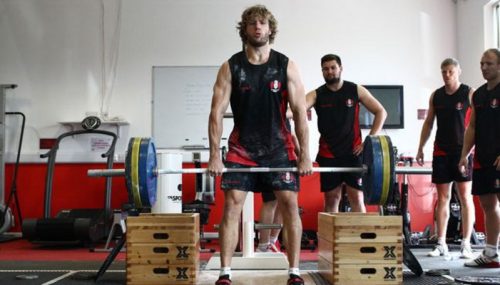
SPEED KILLS
Speed = Distance Covered ÷ Time
In the game of football, speed is becoming more and more important. The game of football has evolved a ton in the past 20 years to place an emphasis on fast athletes. Because of that, it is important to get with the times and work to improve your speed.
When looking at the speed equation, it is how much ground you cover over time. Essentially, it comes down to how much ground you cover with each stride (the more ground you can cover the faster you will be).
So how do you cover more ground? If you think I am going to resort back to getting stronger, you were right!
Very similar to power, we need to develop a good strength foundation before we can get faster. Once we develop a good strength foundation, then we need to teach the body how to turn that strength into power. The more power the legs can generate, the more ground you will cover.
Another component to speed is movement technique. When we work with our athletes, it is our goal to teach them how to be as efficient as possible with their movements so there is no wasted motion or movement. Any wasted movement will lead to slower movement and times.
This is important for both combine testing as well as performance on the field. After all, one wasted step could make the difference in a .10 in a forty-yard dash or in making that 60-yard touchdown run.
Related: Get Freaky Fast With The Speed System From Overtime Athletes
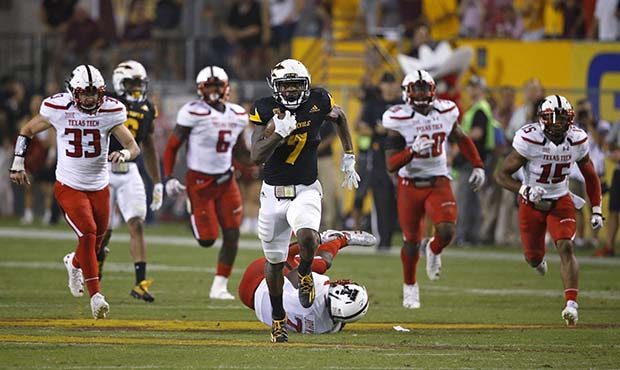
Related: 25 Most Jacked Players in the NFL
Related: Top 25 College Football Rankings
SO HOW DO WE TRAIN FOR STRENGTH, POWER, AND SPEED?
Depending on what training split you are following, you can look to split up training these 3 qualities on different days or you can combine all of them in one training session.
We generally train all three qualities in the same training session since we don’t often have the luxury of training an athlete 4-5 days a week (our athletes are extremely busy with school, practices, games, etc.). Most of the athletes we work with are only able to come in once or twice (maybe three times) a week so we are trying to fit as much as possible with every session they are in.
If you decide to go the route of training multiple qualities in one session, then there is an order that we would recommend you follow:
- Speed
- Power
- Strength
Speed – I like to put speed/agility work first in their workout (following a thorough warm-up of course). Because technique is very important when it comes to speed and agility, I want my athletes to be fresh to ensure they can focus on cementing good movement habits/technique.
With our speed/agility training, we primarily focus on straight-line acceleration and change of direction (accelerating, decelerating, and changing direction as efficiently as possible)
For straight-line acceleration we implement the following:
-
- Light-medium sled sprints
- Sprint variations w/ various starting positions (with bands to add resistance and without bands)
For agility we implement the following:
-
- Cone drills that emphasize change of direction – primarily planting, crossing over, backpedaling, and accelerating forward (we also add in reaction drills and some competition to make it more “game-like”)
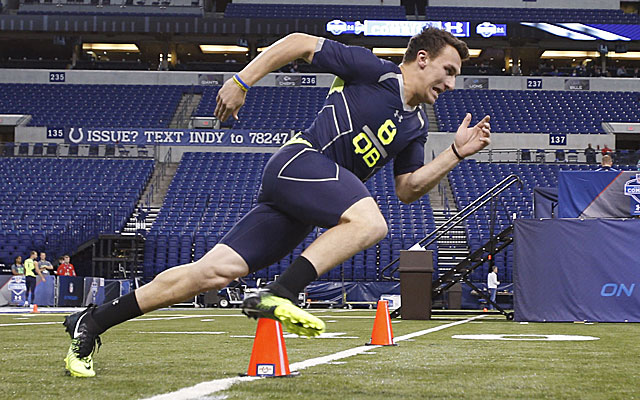
Power – Following speed/agility, we would generally work on power development. We incorporate a lot of plyometric movements along with some medium-heavy weighted movements focusing on accelerating the weight.
For the lower body, we like to emphasize a lot of plyometric variations (in various directions/planes)
-
- Broad Jump Variations
- Bodyweight and/or weighted with a medball or band
- 45 Degree Broad Jumps
- Single-Leg Broad Jump Variations
- Repeat Broad Jumps
- Vertical Jump Variations
- Bodyweight and/or weighted with a medball
- Single Leg Variations
- Single Leg Lateral Jumps
- Bodyweight and/or weighted with a medball
- Broad Jump Variations
We also implement medium-heavy weight training movements that primarily target the posterior chain to develop power such as:
-
- Speed Squats with Chains and/or Bands
- Speed Deadlifts
- DB/KB Swings (add band for advanced variation)
- Squat Jumps
- Medium-Heavy Sled Push
For the upper body we develop power primarily with the horizontal pressing movement (since that is the most used upper body movement in football) with the following:
-
- Speed Bench with Chains and/or Bands
- Speed DB Bench
- Plyo Push-Ups
- MB Throw Variations
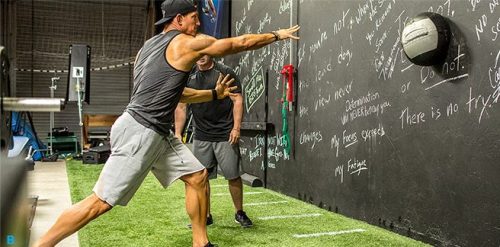
Strength – Following the speed and plyo portion of our training session, we will then incorporate some strength training. We generally incorporate total-body compound functional movements with an emphasis on developing maximal strength and injury prevention.
Movements we incorporate for the lower body include
-
- Box Squats
- Split Squats / Single Leg Squats w. Rear Leg Elevated
- Deadlifts/Rack Pulls
Movements we incorporate for the upper body include
-
- Bench Press
- Floor Press
- 1, 2, and 3 Board Press
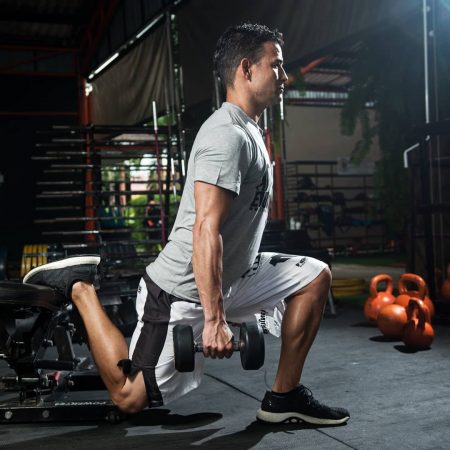
FOOTBALL TRAINING – PUTTING IT ALL TOGETHER
Below is a 2 Day Total Body Split that we might use to develop strength, speed, and power:
| TRAINING SESSION 1 | ||||
| SPEED | SETS | REPS | ||
| 1A | BAND RESISTED MOUNTAIN CLIMBER SPRINTS | 3 | 2 | |
| 1B | HALF-KNEELING PARTNER CHASE SPRINTS | 2 | ||
| POWER | SETS | REPS | ||
| 1A | BAND RESISTED BROAD JUMPS | 3 | 8 | |
| 1B | BAND RESISTED SINGLE LEG LATERAL JUMPS | 5/LEG | ||
| STRENGTH | SETS | REPS | ||
| 1A | BB BOX BACK SQUAT | 3 | 4 | |
| 1B | DB LOW INCLINE ROW | 12 | ||
| 1C | PUSH-UPS (ADD WEIGHT FOR PROGRESSION) | 15 | ||
| 2A | DB SWINGS (ADD BAND FOR PROGRESSION) | 3 | 10 | |
| 2B | LYING DB TRI EXTENSIONS | 12 | ||
| TRAINING SESSION 2 | ||||
| SPEED | SETS | REPS | ||
| 1A | AGILITY CONE DRILLS | 3 | 3 | |
| 1B | REACTION AGILITY CONE DRILLS | 3 | ||
| POWER | SETS | REPS | ||
| 1A | SLED SPRINTS | 4 | 1 | |
| 1B | VERTICAL JUMPS OVER CONE HOLDING MED BALL | 4 | ||
| STRENGTH | SETS | REPS | ||
| 1A | BB FLOOR PRESS | 3 | 5 | |
| 1B | HALF-KNEELING BAND FACE PULL | 14 | ||
| 1C | DB GOBLET WALKING LUNGE | 14 steps | ||
| 2A | BACK EXTENSION W/ 1 SEC HOLD AT TOP (ADD BAND FOR PROGRESSION) | 3 | 15 | |
| 2B | MINI BAND AROUND ANKLE LATERAL WALKS | 10/DIR | ||
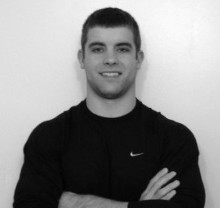
Bobby Fioritto is the founder and president of Elite Sports Performance, a highly sought after athletic performance training facility located in Cleveland, OH.
He received his Master’s degree in Exercise Physiology from Kent State University and is both a Certified Sports Nutritionist (CISSN) and Youth Nutrition Specialist.
Bobby has worked with athletes of all levels – ranging from youth to elite and has had tremendous success across all categories. Visit his website to get more info on what he has to offer for you: www.BobbyFioritto.com.

